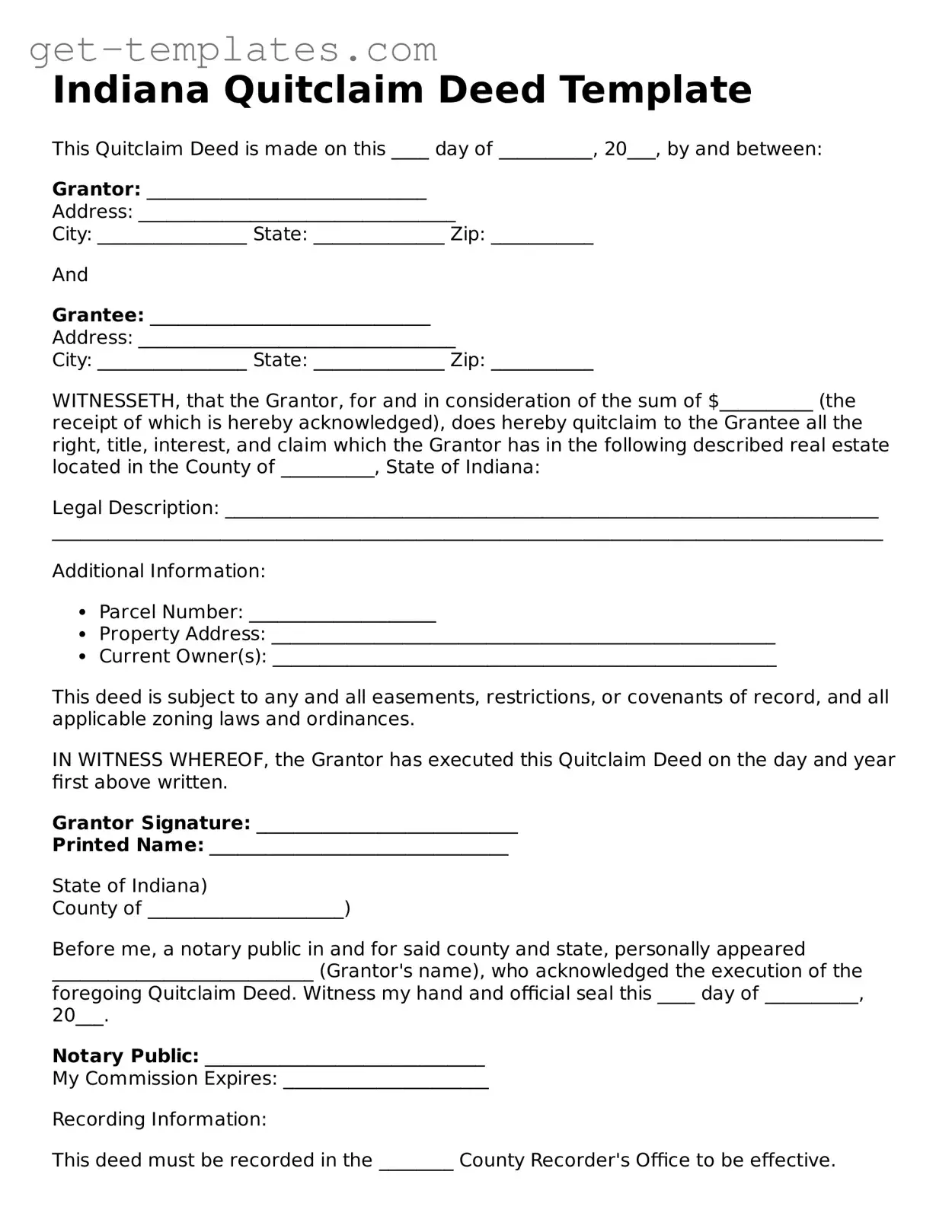Indiana Quitclaim Deed Template
This Quitclaim Deed is made on this ____ day of __________, 20___, by and between:
Grantor: ______________________________
Address: __________________________________
City: ________________ State: ______________ Zip: ___________
And
Grantee: ______________________________
Address: __________________________________
City: ________________ State: ______________ Zip: ___________
WITNESSETH, that the Grantor, for and in consideration of the sum of $__________ (the receipt of which is hereby acknowledged), does hereby quitclaim to the Grantee all the right, title, interest, and claim which the Grantor has in the following described real estate located in the County of __________, State of Indiana:
Legal Description: ______________________________________________________________________
_________________________________________________________________________________________
Additional Information:
- Parcel Number: ____________________
- Property Address: ______________________________________________________
- Current Owner(s): ______________________________________________________
This deed is subject to any and all easements, restrictions, or covenants of record, and all applicable zoning laws and ordinances.
IN WITNESS WHEREOF, the Grantor has executed this Quitclaim Deed on the day and year first above written.
Grantor Signature: ____________________________
Printed Name: ________________________________
State of Indiana)
County of _____________________)
Before me, a notary public in and for said county and state, personally appeared ____________________________ (Grantor's name), who acknowledged the execution of the foregoing Quitclaim Deed. Witness my hand and official seal this ____ day of __________, 20___.
Notary Public: ______________________________
My Commission Expires: ______________________
Recording Information:
This deed must be recorded in the ________ County Recorder's Office to be effective.
